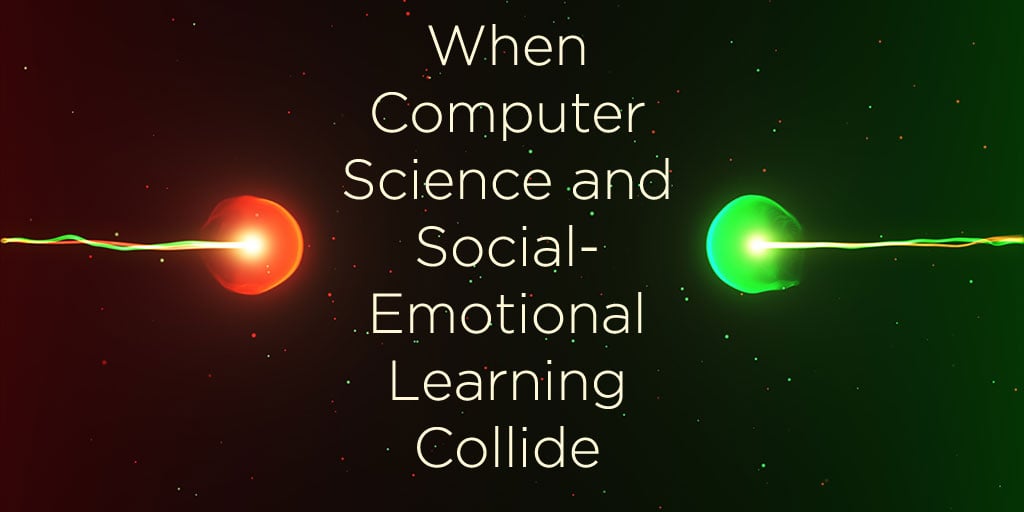
Many educators would agree that there has been an increase with students displaying anti-social tendencies and a struggle with social skills over the past 10 years. There are different theories about the root cause of this, but one that I have heard recently seems very logical on the surface. It goes something like this: Adults and students are spending more time than ever interacting over devices (screens) and not face to face. This reality hurts students’ development because they are unable to interpret social cues, facial expressions, and voice inflection. This has resulted in students who struggle more with social skills like cooperation and conflict resolution than in previous generations when screen time was less frequent.
Many of us probably nod our heads when we hear something like this. Educators know how important social skills are—things like negotiating, listening, managing emotions, and assertiveness. These higher-level skills are very difficult if the foundational skills of interaction are missing. And for more and more of our students, these foundational skills are definitely missing.
Giving Students the Right Tools
If we ascribe to this theory, what are we going to do to help? Go to the students’ homes and smash all the screens? Probably not. But, I have an idea that might help both students and teachers in improving social skills through the use of technology. If you think I’m crazy, stick with me for a minute.
One of the issues that students who struggle with social skills have is the inability to manage things—either their thoughts, their body language, or their interpretation. If we are able to give students some tools and language to aid their management of these, it can help them to improve their behavior. For some students, the language of computer coding is perfect to help them understand how choices have consequences and the patterns that can develop from them. Here are some ways we can do this:
- Logical progressions: Events happen in a systematic order. When we look at them objectively and reflect on them, we can see that by changing the order of events, it can change the outcome. This may seem like a simple theory, but many students who struggle with social-emotional learning don't always see how the events happening in a specific order created the outcome.
For example, say students are asked to get in line to exit the classroom. The student at the front of the line becomes very frustrated when another student cuts in front of him. One student pushes the other out of the way to get to the front of the line. The other student falls to the ground and hurts his arm. When looked at objectively, the student who was frustrated might understand that there were different points in the flow of events that could have resulted in a different outcome. After an event happens with a bad outcome, this is a perfect time for the student to go back and recode the events that occurred. They can even use the same block format that they use in coding to list the events, then insert a new action that should have been inserted in order to produce a different outcome.
- If-then statements: Students learning basic coding usually know how to use a simple if-then statement. The logic is, “If this happens, then this will happen.” For example, “If the score >= 10, then ‘Game Over.’” We can use this same logic in social settings with students to help them understand how we can manipulate the variables for success. If my teacher told me not to break the rule but I did, then I will have a consequence. If I don't do my homework, then I get a zero. Articulating these in an analogical sense, it helps to get the emotion and the excuses out of the situation. Students can even come up with their own “If-Then” statements for situations in their life. They can start with the “Then” outcome they want, and work backwards to figure out how to get there.
- The while loop: This is probably less used by most students, but it shows us that we have to get to a threshold in order for something else to happen. For example, “While I have missing work, I will have to stay after school.” “While I make rude comments to other students, I will not have friends.” In order to “get out” of a while loop, the condition needs to stop or be met. Students who are “stuck” in a while loop need to see objectively how they may move out of the loop and into a preferred state.
These are just three simple examples, but I hope you see the point. Even though student behavior is often full of emotion and subjectivity, it is possible to use tools and structures to look at what is going on. For some students, the knowledge of coding will increase and the ability to manage behaviors will improve. There is, of course, a certain type of student who will probably understand this better than others, but as we incorporate computer science more into the elementary classroom, these tools can become powerful language and models for thinking about how we behave.
Want more insightful teaching tips delivered straight to your inbox? Be sure to subscribe to the Educator blog today!



